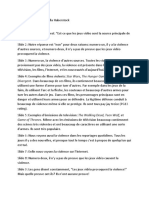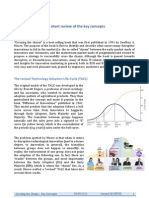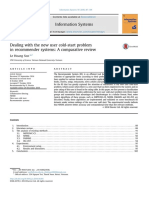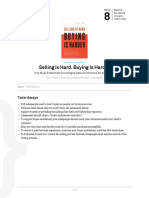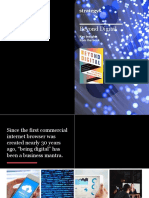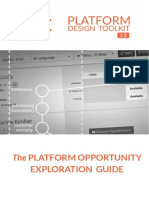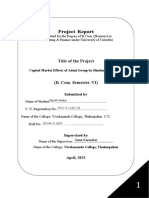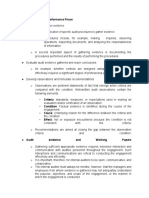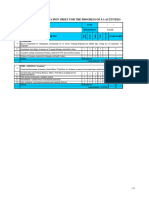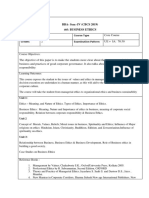Hierarchy
of
Powers
Five
types
of
economic
power,
organized
in
descending
order
from
most
general
to
most
specic:
1. 2. 3. 4. 5. Category
power
Company
power
Market
power
Oer
power
ExecuJon
power
�Category
Maturity
Life
Cycle
Indenitely
elas-c
middle
Revenue
Growth
A
Emerging
Categories
B
Growth
Categories
C
Mature
Categories
D
Declining
Categories
End
of
Life
Technology
Adop-on
Life
Cycle
Time
Fault
Line!
Figure
2.1
�PorSolio
Management
The
Growth/Materiality
Matrix
High
Growth
Low
Growth
Material
Growth
2
1
3
4
Mature
Not
Material
Emerging
Declining
Figure
2.2
�Typical
PorSolio
PaUern
High
Growth
Categories
Material
to
Current
Financials
2
1
3
4
Low
Growth
Categories
Not
Material
Figure
2.3
�The
Three
Horizons
Model
High
Growth
Businesses
Todays
revenue
growth
+
tomorrows
cash
ow
Current
Businesses
Generate
todays
cash
ow
Horizon
1
0
to
12
months
Managing
a
PorSolio
Accumulated
Total
Returns
Horizon
3
36
to
72
months
Horizon
2
12
to
36
months
Growth
OpJons
OpJons
on
future
high-growth
businesses
Expected
Window
of
Returns
Figure
2.4
�Three
Horizons
Model
Mapped
to
Growth/Materiality
Matrix
High
Growth
Horizon
1
Material
Horizon
0
Figure
2.5
Low
Growth
Not
Material
Horizon
3
Horizon
2
�Goals,
Metrics,
and
the
Three
Horizons
Dierent
Metrics
for
Each
Horizon
HORIZON 1 (0 - 12 mos)
Maximize
Economic
Returns
Revenue
vs.
plan
Bookings
ContribuJon
margin
Market
share
Wallet
share
TIME FRAME
Driving
Goal
Key
Performance
Indicators
HORIZON 2 (12 - 36 mos)
Become
a
Going
Concern
Target
accts
vs.
plan
Sales
velocity
Deal
size
Segment
share
Time
to
-pping
point
HORIZON 3 (36 - 72 mos)
Create
a
Category
Name-brand
customers
Deal
size
Name-brand
partners
PR
buzz
Flagship
projects
Opex
Figure
2.6
Timex
Capex
�Achieving
Escape
Velocity
Focus
on
CompeJJve
SeparaJon
Compe-tor
1
*
*
YOU
*
Compe-tor
3
An
Unmatchable
Oer
Compe-tor
2
Gain
bargaining
power
by
gedng
separaJon
from
your
compeJJve
set
Failure
to
separate
means
lower
revenues
or
prot
margins
or
both
Compe--ve
Set
Figure
3.1
�Two
Business
Architectures
Complex
Systems
vs.
Volume
OperaJons
Sweet
Spot
Sweet
Spot
EecJveness
Complex
Systems
Volume
OperaJons
100
Government
Programs
Complexity
101
102
Volume
103
104
105
106
Number
of
Customers
Small
Business
Figure
3.2
107
108
109
Societal
En-tlements
Enterprise
Consumer
�9-Point
Market
Strategy
Framework
Key
sponsor
1.
Target
Customer
2.
Compelling
Reason
to
Buy
Core
problem
Complete
soluJon
FuncJon
of
whole
product
complexity
3.
Whole
Oer
4.
Partners
and
Allies
5.
Sales
Strategy
6.
Pricing
Strategy
Value
based
Needed
for
whole
product
LegiJmate
alternaJves
7.
CompeJJon
8.
PosiJoning
DierenJaJon
Next
growth
segment
9.
Next
Target
Figure
4.1
�Return
on
Innova-on
Dieren-a-on
Neutraliza-on
Failed
AYempts
Op-miza-on
Waste
Figure
5.1
�Free
Resources
Trapped
in
Context
Tasks
1. 2. 3. 4. Centralize.
Bring
operaJons
under
a
single
authority
to
reduce
overhead
and
create
a
single
point
of
control
to
manage
mission-criJcal
risk.
Standardize.
Reduce
the
variety
and
variability
of
processes
delivering
similar
outputs
to
eliminate
costs
and
minimize
risks.
Modularize.
Deconstruct
the
system
into
its
component
subsystems
and
standardize
interfaces
for
future
cost
reducJons.
Op-mize.
Eliminate
redundant
steps,
automate
standard
sequences,
streamline
remaining
operaJons,
subsJtute
lower-cost
components,
or
otherwise
cost-
and
resource-reduce.
Instrument.
Characterize
the
remaining
processes
in
terms
of
the
variability
of
key
parameters
and
develop
monitor-and-control
systems
to
manage
their
performance.
Outsource.
Drive
processes
out
of
the
enterprise
enJrely
to
further
reduce
overhead,
variabilize
costs,
and
minimize
future
investment.
Incorporate
vendor
use
of
monitor- and-control
systems
into
Service
Level
Agreement.
The
Six
Levers
5. 6.
Figure
5.2
�Price/Benet
SensiJvity
How
Customers
Internalize
Value
HI
Price
Sensi-vity
COST
PERFORMANCE
CONVENIENCE
PREMIUM
LO
LO
Benet
Sensi-vity
Figure
5.3
HI
�Value
Disciplines
and
Price/Benet
SensiJvity
HI
Price
Sensi-vity
Product
Leadership
HI
Benet
Sensi-vity
Figure
5.4
OperaJonal
Excellence
Customer
InJmacy
LO
LO
�CreaJng
the
Unmatchable
Oer
The
Core/Context
Model
Core
Unmatchable
DierenJaJon
Mission
Cri-cal
Context
Neutralizing
InnovaJons
Enabling
Figure
2.1
�The
Arc
of
ExecuJon
Complex
Systems
Enterprises
Playbooks
Deploy
Projects
Products
Invent
Op-mize
Figure
6.1
�The
Arc
of
ExecuJon
Volume
OperaJons
Enterprises
Partners
Deploy
Products
Processes
Invent
Op-mize
Figure
6.2
�Catalyzing
Escape
Velocity
The
Tipping
Point
Role
of
Programs
TransiJon
Program
l
Deploy
TransiJon
Program
l
Invent
Tipping
Point
Tipping
Point
OpJmize
Figure
6.3
�Four
Modes
of
ExecuJon
Execution Mode
Invention
Visionary Inventor
Deployment
Pragmatic Deployer
Optimization
Conservative Optimizer
Transitions
Pragmatic Orchestrator
Type of Leader
Core Competence
Creativity
Competitiveness
Control
Collaboration
Core Attribute
Spontaneous
Tough-minded
Prepared
Empathetic
Decision Style
Intuition
Experimentation
Deliberation
Consensus
Functions Most in Alignment
R&D, Creative Services
Sales, Engineering
Finance, Operations
HR, Marketing, Customer Suppt
Figure
6.4
�Get
your
copy
of
Escape
Velocity
www.escapevelocitybymoore.com
Get
your
Agile
Toolkit
www.rallydev.com
-
IteraJon
Planning
-
User
Stories
-
MulJ-team
Release
Planning
-
Project
Managers




